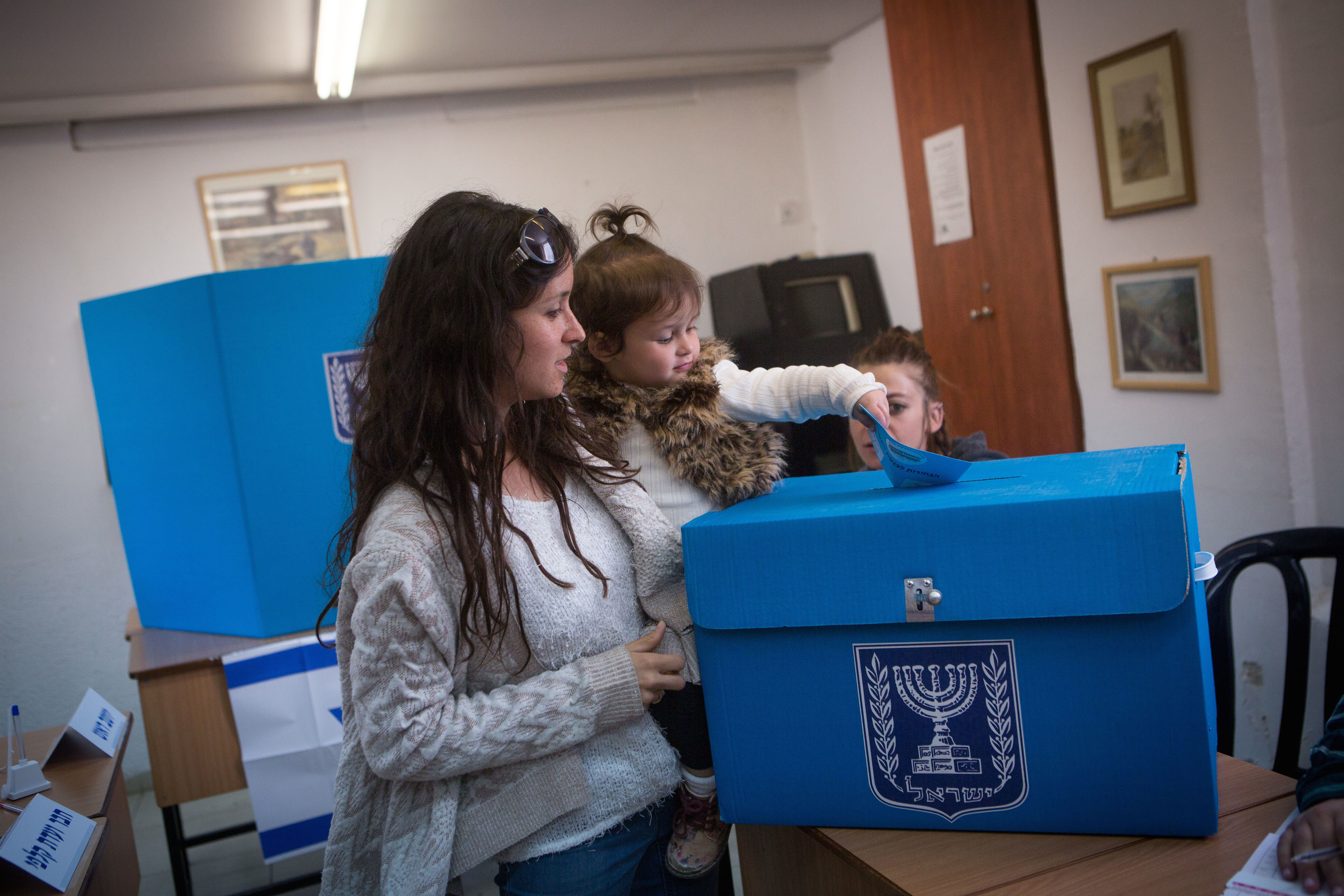Netanyahu didn’t win Israel’s election. So why is he getting the chance to form a government?
Published September 26, 2019
(JTA) — As votes were counted following last week’s election in Israel, many saw the results as a loss for longtime Prime Minister Benjamin Netanyahu.
After all, Netanyahu’s right-wing Likud Party won fewer seats than the Blue and White party of his main competitor Benny Gantz.
So it came as a surprise for many on Wednesday when Israeli President Reuven Rivlin decided to give Netanyahu, rather than Gantz, the first shot at forming a ruling government.
The Sept. 17 election wasn’t just a battle between Netanyahu and Gantz, or Likud and Blue and White. The two men represent the country’s two largest parties, but Israel’s electoral process isn’t that simple. In the current system, whichever party wins the most votes still has to create a coalition of parties that together makes up a majority of seats in the Knesset, Israel’s parliament.
In other words, to lead the country, the parties need to work with smaller parties and convince them to join their coalitions to reach the magic majority number of seats: 61.
At the moment, neither Netanyahu or Gantz has an easy path to a coalition of 61 seats — but Rivlin decided that Netanyahu has a slightly better chance.
Even with that opportunity, Netanyahu might not emerge victorious when all is said and done.
Still confused? Here’s a quick breakdown of how it works, and what could happen next.
How does Israel’s electoral system work?

An American Israeli woman casts her vote at a polling station in Jerusalem, on March 17, 2015, in the Israeli general elections for the 20th parliament. (Miriam Alster/Flash90)
There are 120 seats in the Knesset. The number of parties fluctuates as they disintegrate and give way to new ones — and most don’t get enough votes to pass the threshold needed to make it to the Knesset. For a breakdown of the country’s major parties, check out this guide.
Israeli citizens do not vote for specific politicians but rather for parties, whose members then vote for their leaders. No party has ever been able to get a majority of seats in the Knesset on its own, so parties have had to form coalitions with each other throughout Israel’s history.
Netanyahu’s last coalition included a number of religious and nationalist right-wing parties. Gantz partnered with a number of centrist and left-wing parties, and this time around he is also in talks with the Arab Joint List — a group of Arab parties that have never before been included in a governing bloc.
How did we get here?
In his most recent coalition, Netanyahu teamed up with the nationalist and religious parties to the right of his Likud party, as well as the secular-nationalist Yisrael Beiteinu, led by Avigdor Liberman.
But that fell apart at the end of last year, when Liberman got angry over a cease-fire agreement brokered with Gaza and Netanyahu’s refusal to pass a bill to extend the military draft to involve more haredi Orthodox men. Afraid that his coalition would crumble, Netanyahu called for new elections, which took place in April.
Though it seemed he was poised to form a right-ring coalition following those elections, he didn’t garner quite enough votes and support to do so. Gantz and his team of seasoned politicians — including Yair Lapid and former Defense Minister Moshe Yaalon — made a formidable debut on the national stage. That gridlock triggered a second election.
Why does the president get to choose, and why did he choose Netanyahu?
Though the Israeli president is mainly a ceremonial figurehead, the office does have one important role in forming the post-election government: deciding who has the best chance at forming a ruling coalition and giving that leader the chance to do so.
Initially, it seemed that Netanyahu and Gantz might work together to form what is called a unity government, in which they each hold prominent positions and possibly even trade off the prime minister role. But that possibility fell apart after days of negotiations, and Rivlin — who has clashed publicly with Netanyahu in the past — decided to grant the sitting prime minister 28 days to try to form a ruling coalition.
Rivlin ultimately sees an easier path to 61 seats for Netanyahu and his allies, because there are simply more elected right-wing lawmakers than there are centrist and left-wing ones. In the end, parties with a total of 55 seats recommended Netanyahu to form the next government, while 54 recommended Gantz.
Even so, the eight seats that Liberman won loom large and would tip either side over 61 — but Liberman has insisted on the idea of a unity government, and won’t pledge his help to either Netanyahu or Gantz on their own. So plenty of negotiating remains to be done.
What happens next?
To say the picture is unclear might be an understatement.
“My inability to form a government is slightly less than that of Gantz,” Netanyahu said Wednesday.
Some analysts say that Netanyahu is unlikely to get his allies together, again, and that could seriously damage his reputation — or even lead to a third election. Others say that whether he forms a ruling coalition or not, being the first one to try to do so boosts his public image as a leader.
Gantz might actually be happy about the way things have worked out so far. Ayman Odeh, the leader of the Arab Joint List Party, said that Gantz’s party strategically asked him to have only 10 out of his 13 Knesset members recommend Gantz as leader of the country, essentially handing the first shot at the coalition-building to Netanyahu. Perhaps Gantz feels that if Netanyahu fails first, the country will rally around the Blue and White leader to avoid that dreaded third election.
Either way, there is a lot to watch for in the coming weeks.















